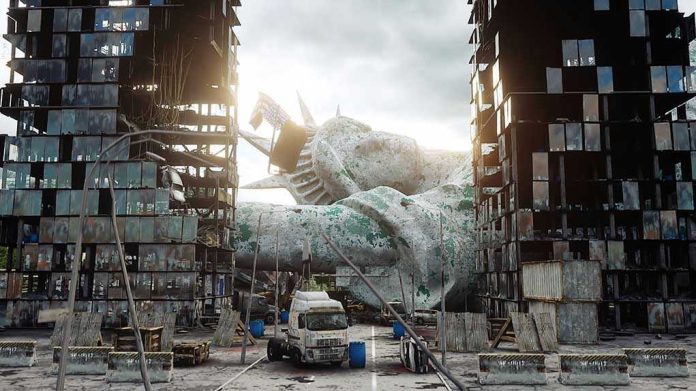
A gas explosion in the Bronx highlights the dire state of public housing safety, sparking renewed demands for accountability and infrastructure reform.
Story Overview
- A gas explosion caused a partial building collapse in the South Bronx.
- No injuries were reported despite the incident’s severity.
- The building is part of the NYCHA-managed Mitchell Houses.
- Concerns about aging infrastructure and safety have intensified.
Gas Explosion Rocks South Bronx Building
A significant gas explosion on October 1, 2025, led to the collapse of a large portion of a public housing building in the South Bronx. The explosion occurred in the incinerator shaft of the Mitchell Houses, a 20-story building managed by the New York City Housing Authority (NYCHA). Remarkably, the incident resulted in no injuries, although it raised considerable alarm about the state of public housing safety and infrastructure maintenance in New York City.
Emergency crews responded swiftly, with the Fire Department of New York (FDNY) receiving reports of the explosion at 8:10 a.m. Debris was seen falling from the upper stories, causing significant damage to the street below. The incident was captured live on television, further emphasizing the dramatic nature of the collapse and the potential for mass casualties had the building been fully occupied at the time.
Infrastructure Concerns and Public Safety
The collapse of the Bronx building has reignited concerns about the safety and maintenance of aging NYCHA properties. Constructed in the mid-20th century, many of these buildings suffer from outdated gas and utility systems, posing significant safety risks to residents. Reports of deferred maintenance and previous incidents involving gas explosions in New York City underscore the urgent need for infrastructure improvements.
Historically, the South Bronx has been an underserved area, densely populated and with a high concentration of public housing. The region has consistently faced scrutiny regarding building safety and maintenance, with residents frequently reporting hazardous conditions. This latest incident has amplified calls for accountability and reform within NYCHA, as well as increased investment in public housing infrastructure.
Immediate and Long-term Implications
In the short term, the explosion has displaced residents and disrupted local traffic and services. The heightened anxiety among NYCHA tenants citywide is palpable, as they question the safety of their homes. In the long term, this incident could lead to increased regulatory scrutiny and potential legal consequences for NYCHA regarding its maintenance practices. Calls for significant infrastructure investment and safety upgrades in public housing are growing louder.
Economically, the costs of repairs, potential lawsuits, and temporary housing for displaced residents will be substantial. Socially, the incident has eroded trust in the safety of public housing, and politically, it has renewed debate over public housing funding and oversight. Ultimately, this disaster may prompt policy changes regarding inspection and repair protocols for public housing nationwide.
Sources:
USA Today coverage of the Bronx building collapse







